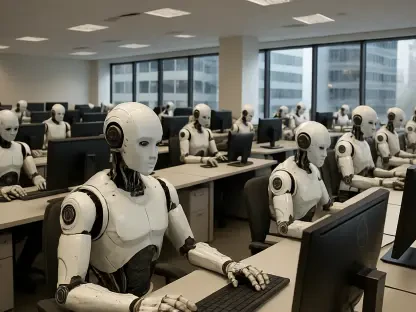Sofia Khaira is a specialist in diversity, equity, and inclusion, dedicated to helping businesses enhance their talent management and development practices. She serves as our HR expert, driving initiatives that foster inclusive and equitable work environments.
Today, we’ll explore LinkedIn’s latest research on in-demand skills, the role of technology and AI in the workplace, the evolving importance of human skills, and the future landscape of skills-based hiring and training.
What insights did LinkedIn’s latest research reveal about the most in-demand skill in today’s workplace?
LinkedIn’s latest research revealed that relationship building is the most in-demand skill in today’s workplace. This is because authentic connections and trust have become increasingly important in businesses, especially following the COVID-19 pandemic.
How did the COVID-19 pandemic impact the importance of relationship building in businesses?
The pandemic highlighted the need for strong interpersonal relationships and trust within teams. With remote work becoming the norm, building and maintaining authentic connections became essential for collaboration and maintaining a cohesive work environment.
Why do you think authentic connections and trust have become more crucial post-pandemic?
Authentic connections and trust are crucial because they foster a supportive and collaborative environment. This is particularly important in remote and hybrid work settings where face-to-face interactions are limited and building trust requires more deliberate effort.
Can you explain the significance of strategic thinking and AI literacy, which were ranked second and third on the list?
Strategic thinking is essential for navigating the rapidly changing business landscape, while AI literacy is critical as AI tools become more integrated into the workplace. Both skills enable employees to adapt and leverage technological advancements effectively.
How are AI tools shaping the workplace environment today?
AI tools are automating routine tasks, allowing employees to focus on more complex and strategic activities. They also provide valuable insights from data analysis, enhancing decision-making processes and driving innovation.
What specific skills do employers look for in workers related to AI literacy?
Employers look for skills such as understanding AI algorithms, data analysis, machine learning, and the ability to work with AI-powered tools. Additionally, problem-solving and critical thinking are crucial to effectively utilizing AI.
How do you see the relationship between technological skills and human skills evolving in the workplace?
Technological and human skills are becoming increasingly intertwined, with tech enhancing human capabilities rather than replacing them. For example, AI can handle data processing while humans focus on interpreting results and making decisions.
Could you give examples of how technology enhances human capabilities without replacing them?
AI tools can sort through large datasets, helping analysts identify trends. Meanwhile, the analysts apply their expertise and creativity to interpret these trends and develop strategic recommendations, creating a synergy between human and technological skills.
Why do you think soft skills like empathy, creativity, and personality are becoming more valuable as AI takes over routine tasks?
Soft skills like empathy, creativity, and personality are irreplaceable by AI. They are essential for teamwork, leadership, and innovation, ensuring that while AI handles routine tasks, humans drive the relationships and creative processes in the workplace.
LinkedIn’s research suggests that skills-based hiring can significantly increase the UK talent pool. Could you elaborate on that?
Skills-based hiring focuses on the competencies and capabilities of candidates rather than their traditional career paths. This approach opens opportunities for individuals with diverse backgrounds and experiences, broadening the talent pool and addressing skill shortages in various sectors.
How might focusing on skills rather than traditional career paths help sectors with talent shortages?
By focusing on specific skills, employers can tap into a more diverse range of candidates, including those with non-traditional backgrounds. This helps to fill roles more efficiently in sectors facing talent shortages by emphasizing practical skills over linear career progression.
What advantages are there in hiring workers of different ages and backgrounds?
Hiring workers of different ages and backgrounds brings diverse perspectives, enhances creativity, and promotes a more inclusive workplace. It also helps in better understanding and serving a diverse customer base.
What role do HR leaders and training providers play in building essential skills within workplaces?
HR leaders and training providers play a pivotal role by offering mentorship programs, cross-functional projects, and leadership training. These initiatives are crucial for fast-tracking essential skill development and ensuring a well-rounded workforce.
Can you provide examples of mentorship programs or cross-functional projects that have been effective in skill development?
Many companies have implemented mentorship programs where experienced employees guide newer team members, fostering knowledge transfer and professional growth. Cross-functional projects also encourage collaboration and expose employees to different roles and skills within the organization.
How important is upskilling in the modern workplace, particularly with the rise of AI?
Upskilling is crucial as it equips employees with the knowledge and skills needed to adapt to technological advancements such as AI. This ensures they remain competitive and can effectively contribute to their organizations.
What steps should HR leaders take to ensure they deepen their understanding of AI literacy?
HR leaders should participate in AI training courses, stay updated with the latest AI trends, and collaborate with tech experts. By doing so, they can integrate AI literacy into their workforce development strategies.
How can company-wide training courses support continued development?
Company-wide training courses ensure that all employees have access to consistent and up-to-date learning opportunities. This promotes a culture of continuous improvement and helps employees stay relevant in a rapidly changing technological landscape.
Karie Willyerd suggested the ability to unlearn as a critical skill for the AI-powered future. Do you agree?
Absolutely. The ability to unlearn is vital because it allows individuals to adapt to new technologies and methodologies. Holding onto outdated practices can hinder progress and adoption of new innovations such as AI.
How can employees develop the ability to critically assess and unlearn preconceptions that may hinder their AI adoption?
Employees can develop this ability by embracing a growth mindset, seeking feedback, and being open to new ideas and approaches. Continuous learning and development programs can also foster a culture of adaptability and openness to change.
The Microsoft survey mentioned that 54% of businesses lack an official AI strategy. How important is it for companies to develop such a strategy?
It is crucial for companies to develop an official AI strategy to remain competitive. An AI strategy helps in systematically integrating AI to improve efficiency, innovation, and decision-making processes.
What are the potential risks for businesses that do not adopt an official AI strategy?
Businesses without an AI strategy risk falling behind in innovation, losing competitive advantage, and facing decreased operational efficiency. They may also struggle with integrating new technologies effectively, which can hinder growth.
Could you discuss the significance of providing inclusive training programs for digital and AI literacy?
Inclusive training programs ensure that employees from all backgrounds have access to necessary skills development. This is important for fostering a diverse workforce and ensuring that everyone can participate in and benefit from digital transformation.
How do older generations and underrepresented groups generally fare in terms of digital skills in the modern workplace?
Older generations and underrepresented groups often face challenges in digital skills due to less exposure or access to training. It’s important for organizations to identify and address these gaps through targeted and supportive training initiatives.
What steps can organizations take to ensure training is inclusive?
Organizations can conduct needs assessments to identify skill gaps, offer flexible training options, provide resources in multiple languages, and create supportive learning environments to ensure that all employees can benefit.
What is your forecast for the future of workforce development in relation to AI and inclusive training programs?
I foresee a future where AI will continue to play a significant role in transforming the workplace, making skill development more essential than ever. Inclusive and continuous training programs will be key in ensuring that all employees can adapt and thrive in this evolving landscape.









